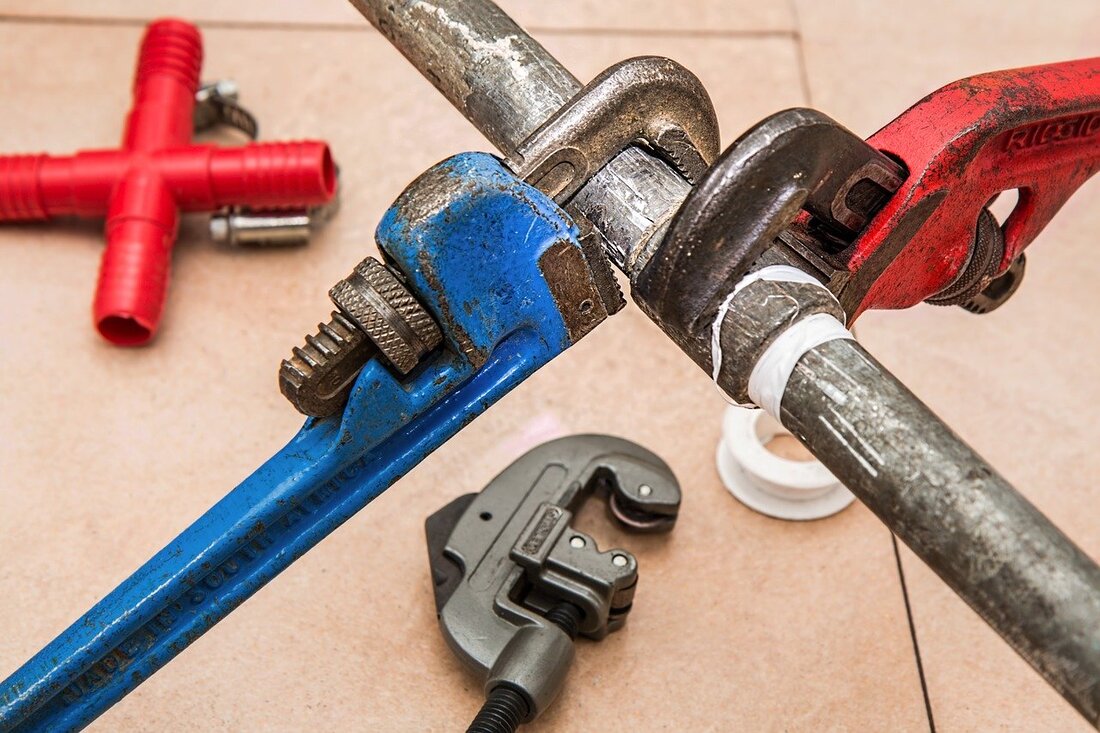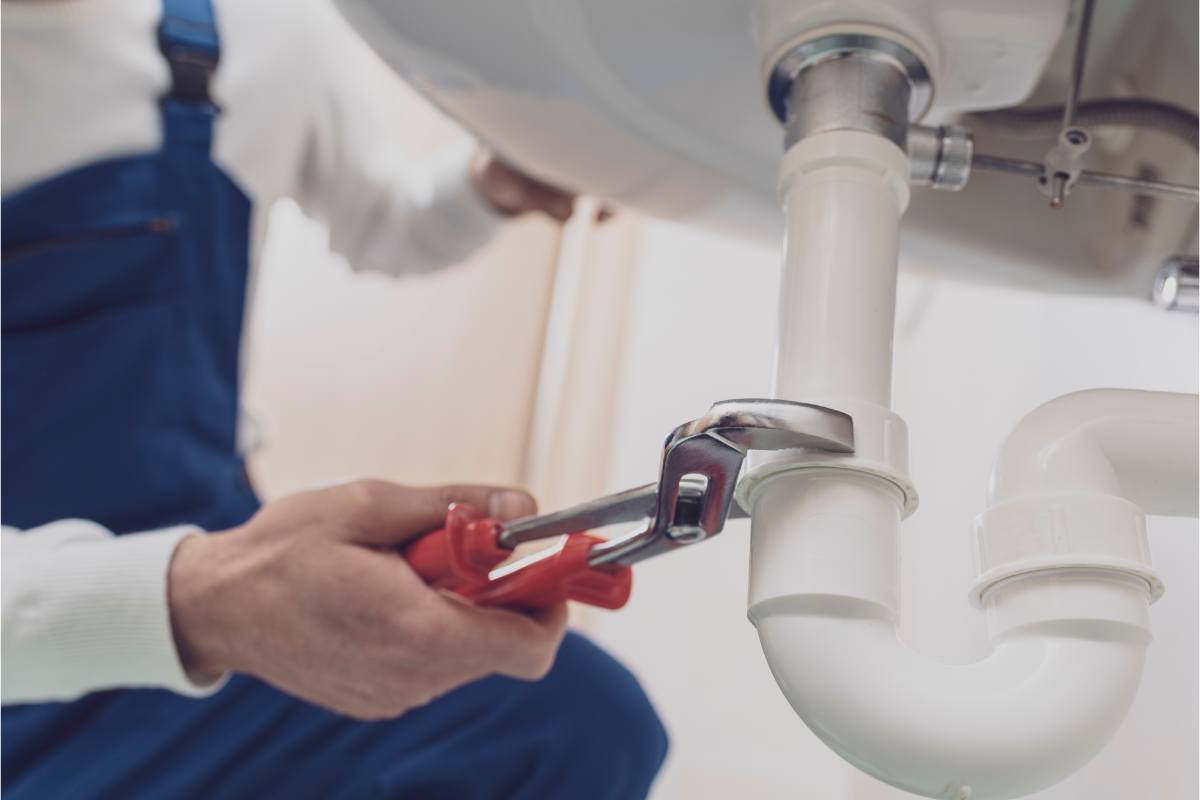Gaining Insight into Home Plumbing Basics: A Beginner's Introduction
Gaining Insight into Home Plumbing Basics: A Beginner's Introduction
Blog Article
What are your opinions regarding How Does the Plumbing Work in Your Home??

Plumbing is a crucial facet of any kind of home, in charge of supplying clean water for alcohol consumption, food preparation, and showering, in addition to removing wastewater safely. Recognizing the essentials of home plumbing is crucial for every single house owner to ensure proper upkeep, troubleshooting, and, if needed, repair services. In this novice's guide, we'll cover the basic ideas of home plumbing to help you become extra accustomed to exactly how it works.
Water System
The water system system brings clean water into your home from a metropolitan water source or a personal well. It consists of a major water line that links to your home's plumbing system, usually situated underground. A water meter determines the quantity of water taken in, while a shut-off shutoff allows you to regulate the flow of water right into your home.
Plumbing Fixtures
Plumbing components are devices that provide water to various parts of your home and consist of sinks, faucets, bathrooms, showers, bath tubs, and home appliances such as dish washers and washing equipments. Each fixture is attached to the supply of water system using pipes and fittings and might have its shut-off shutoff for maintenance or emergencies.
Water Furnace
The water heating system is responsible for heating water for residential use, consisting of bathing, food preparation, and cleaning. Typical types of hot water heater include tank-type water heaters, tankless (on-demand) water heaters, and heat pump hot water heater. The water heater is attached to the water system system and supplies hot water to plumbing components as required.
Drainage System
The water drainage system removes wastewater from your home and brings it away to a sewer treatment center or septic tank. It includes a network of pipelines, installations, and components that transfer wastewater from plumbing components to the major drain line or septic tank. Appropriate drainage is vital to avoid blockages, back-ups, and sewer leaks.
Air flow System
The air flow system aids keep proper air pressure and stop sewage system gases from entering your home. Vent pipes, also referred to as vent stacks, prolong from plumbing components to the roof covering, allowing sewage system gases to run away safely outside. Ventilation pipes likewise enable air to go into the drain system, helping with smooth wastewater circulation and protecting against suction or vacuum cleaner results.
Usual Plumbing Devices
Having the right tools available is crucial for executing basic plumbing repair services and upkeep jobs. Typical plumbing devices include flexible wrenches, pipe wrenches, pliers, pipeline cutters, hacksaws, bettors, augers (or drainpipe serpents), and Teflon tape. Having these devices readily available can help you deal with small plumbing problems efficiently.
Basic Plumbing Repair Services
While some plumbing repair services may need expert aid, many common concerns can be resolved with fundamental DIY methods. Knowing just how to fix a leaking tap, unblock a drain, replace a bathroom flapper, or fix a trickling showerhead can conserve you time and money on plumbing repairs.
Conclusion
Comprehending the fundamentals of home plumbing is necessary for every single home owner to keep a risk-free, functional, and efficient plumbing system. By familiarizing yourself with the supply of water system, plumbing fixtures, water drainage system, ventilation system, common plumbing devices, and basic repairs, you can with confidence deal with minor plumbing concerns and ensure your home's plumbing system runs smoothly.
Plumbing for Beginners: A Comprehensive Guide
If you’re a beginner when it comes to plumbing, don’t worry; you’re not alone. Plumbing may seem intimidating, but with the right knowledge and a little practice, you can handle many common plumbing issues on your own. In this comprehensive guide, we will demystify the world of plumbing for beginners, providing you with the basic knowledge and skills needed to tackle common plumbing problems and even take on some DIY plumbing projects.
The Importance of Basic Plumbing Knowledge for Beginners:
First and foremost, basic plumbing knowledge gives you a solid foundation. It helps you grasp the key concepts and terminology that are essential in this field. By learning the basics, you’ll be able to build upon that knowledge and tackle more complex plumbing tasks in the future.
Having a basic understanding of plumbing also enables you to handle common issues that may arise in your home. Picture this: a leaky faucet or a clogged drain. With some basic plumbing knowledge, you’ll have the confidence to troubleshoot and fix these problems on your own. It saves you from unnecessary expenses and the hassle of waiting for a professional to arrive.
As a beginner, learning the basics of plumbing empowers you to take care of your own home. It gives you a sense of independence and self-reliance. You’ll no longer have to rely solely on professionals for every small issue that pops up. Instead, you can handle many tasks yourself, saving time and money in the process.
Remember, everyone starts as a beginner. Embrace the learning process and take small steps to expand your plumbing knowledge. There are plenty of online resources, tutorials, and even local workshops that talk about plumbing for beginners.
Essential Tools for Plumbing for Beginners
As you start your plumbing journey, having the right tools in your toolbox is crucial. Let’s explore some of the must-have tools:
Adjustable Wrench:
This versatile tool is a staple in any plumber’s toolbox. It allows you to tighten or loosen nuts and bolts of various sizes. Make sure to have an adjustable wrench with a comfortable grip.
Pipe Wrench:
A pipe wrench is specifically designed for gripping and turning pipes. It has serrated jaws that provide a strong grip, making it easier to loosen or tighten threaded pipes and fittings.
Plunger:
The plunger is a simple yet effective tool for clearing clogged drains and toilets. It creates suction when you push and pull, helping to dislodge blockages. Keep a good-quality plunger handy for those unexpected clogs.
Pipe Cutter:
When it comes to cutting pipes, a pipe cutter is your go-to tool. It creates clean, precise cuts without damaging the pipe. Look for a pipe cutter that can handle the pipe sizes you’re working with.
Hacksaw:
A hacksaw is useful for cutting through pipes, screws, and other materials. It’s a versatile tool that can handle different cutting tasks. Remember to use a blade suitable for cutting metal.
Tape Measure:
Accurate measurements are crucial in plumbing. A tape measure allows you to measure pipe lengths, distances, and dimensions accurately. Opt for a sturdy tape measure that extends a good length.
Pliers:
Pliers come in handy for various tasks, such as gripping, bending, and cutting. Slip-joint pliers with adjustable jaws are great for gripping pipes, nuts, and bolts.

Do you like reading about How Does the Plumbing Work in Your Home?? Try to leave feedback down below. We will be pleased to know your opinions about this blog entry. We hope to see you back again later on. Liked our blog entry? Please share it. Help somebody else check it out. Bless you for being here. Come back soon.
Call Today Report this page